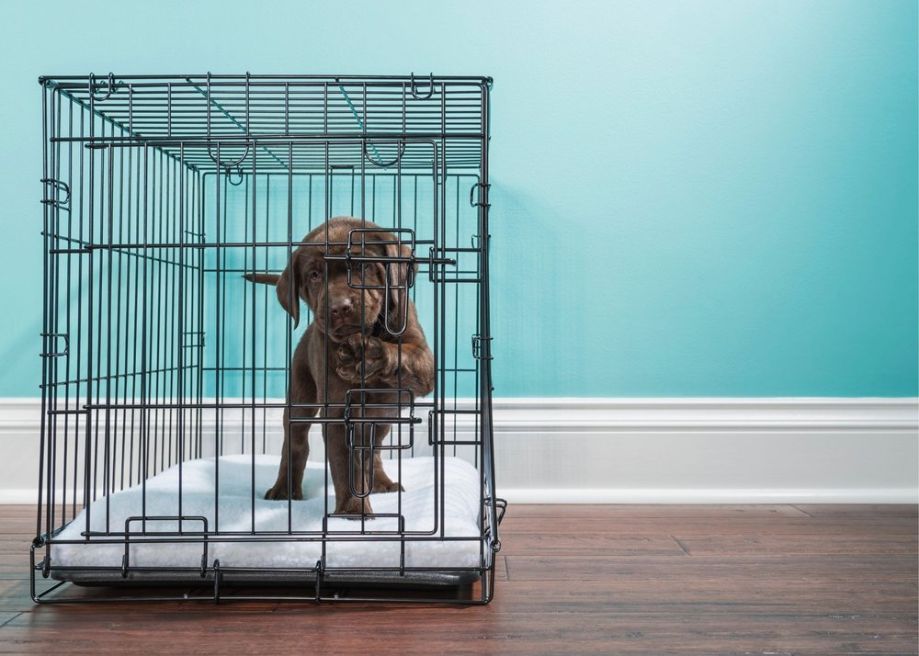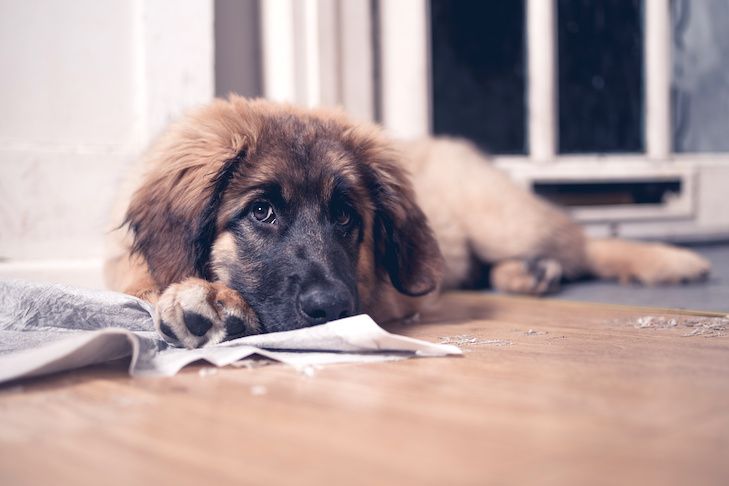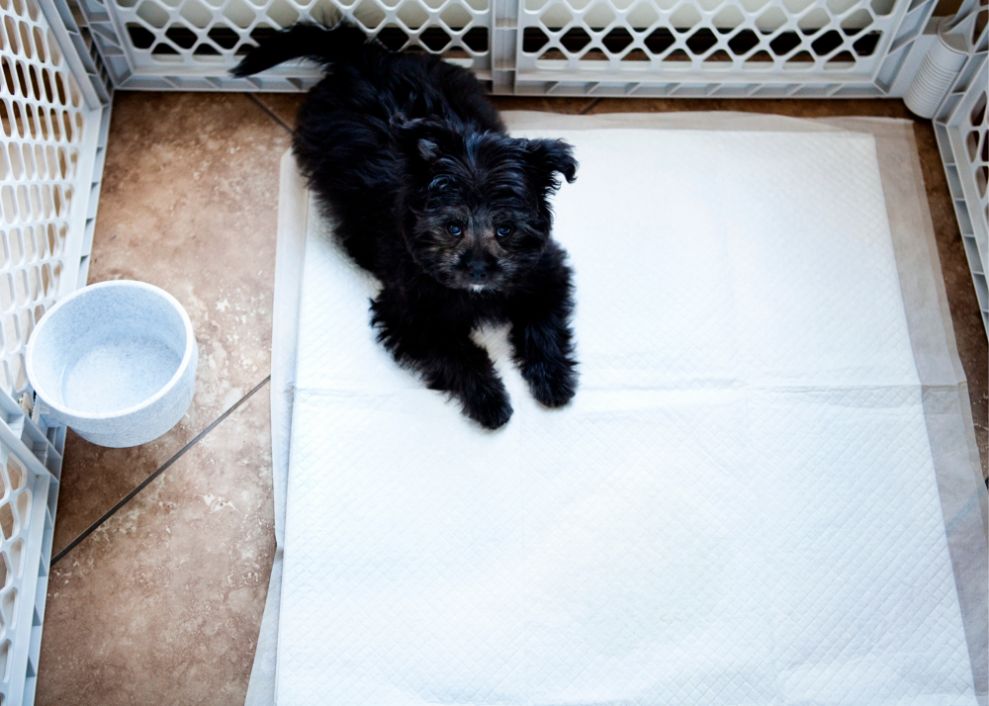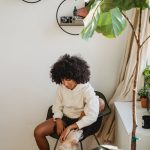Potty training a new puppy is frequently at the top of the list of things to do. It may be a little simpler if you have a yard or outdoor space, but if you live in an apartment or high-rise, it becomes more challenging to transport a puppy outside when they urgently need to relieve itself.
It is never too early to start properly training your puppy. Mother dogs “train” their puppies from the get-go. Everything depends on your strategy, methods, and consistency. The same is true for potty training a dog, and we can assist you in beginning the process. In fact, we think that the sooner you start, the faster your puppy or new dog will pick things up.
If you want to know how to potty train your puppy in an apartment, please read this article carefully.
Why Good Potty Habits Are Essential?
The foundation for establishing a loving, trusting relationship between you and your new family member is good toilet habits. If not, you’ll become frustrated and worn out worrying constantly that your puppy will have an accident. Even worse, because there will always be a part of your brain that worries about accidents, you won’t ever fully commit to training anything else.
One of the main reasons people return, sell, or even euthanize their dogs is regrettably ignoring potty training. It can often become too difficult to not worry about bringing their dog when they leave the house and to never fully be able to trust their dog.
As you can see, it’s crucial to comprehend how to do it correctly. Your life will be so much easier once you and your puppy have mastered it. Your relationship will off to a fantastic start thanks to your puppy’s happiness and assurance. Additionally, it will make everything you do with your puppy and later, a grown dog, much simpler and more enjoyable.
Given that you are unable to simply open your door to a yard or garden, how do you potty train your puppy? To be completely honest, it will require effort, creativity, and perseverance, but it is possible. There are some guidelines, and understanding the fundamentals of potty training is crucial.
Read More:
Potty Training Basics
As a starting point, it’s wise to remember that your puppy can hold its bladder for an hour every month of age. For instance, they probably won’t be able to hold it for more than two hours if your puppy is only eight weeks old.

It takes about 3 hours once they reach 12 weeks. Puppies typically need to go right away after eating or playing, but they can usually hold their bladder for a little while sleeping (until they wake up).
To prevent accidents and keep your puppy out of trouble until they are older, it’s also crucial to constantly watch over them. Use a baby gate or x-pen at home to contain your pet, but think about crate training at night or when you have to leave the house for work or errands.
Your dog should be able to stand up and turn around in the crate, but it shouldn’t have much extra space since its purpose is to keep your puppy cozy. Never use the crate as a punishment; when used correctly, it turns into a safe place they enjoy being in. Give your puppy breaks or time-outs there; just make it a pleasant experience for them and praise them for entering.
In terms of punishment, never punish your puppy for misbehaving. Even if you believe they have it down, errors do occur. Your puppy will either learn that they can’t go potty in front of you without getting in trouble (so they’ll try to be sneaky about it) or they won’t understand why you’re upset and will just get scared when you yell at them or poke their nose in it.
Keep it positive, give them a treat, praise, or their favorite toy when they behave properly, and if they make a mistake, just clean it up and move on.
If you train yourself to be alert for their telltale behaviors, such as sniffing more frequently than usual, circling, running abruptly to a corner or another room, etc. — you’ll be able to catch your puppy before an accident happens.
Tips For Puppy Potty Training Success
Get Into A Regular Routine
Feeding and potty breaks should be done at regular intervals so that your dog can begin to form routines and expectations. Younger puppies, who can’t hold it as long, will require more frequent potty breaks.
Start by letting them out every hour, or more often if your puppy is very young, for the best chance of success. And within five to ten minutes of eating, drinking, or playing for young puppies, as well as after waking up or emerging from their crate.
Offer Praise Or Rewards For Desired Behavior
Whether your dog responds best to verbal praise, a favorite toy, or a special treat, be sure to shower him with a positive stimulus each time he successfully goes in the right place.
Carry Your Puppy
Take your dog with you in the elevator and down the hall until you reach the restroom. You can start allowing them to reach the restroom using their own four paws as they get older and more dependable with their bathroom habits.
Use Pee Pads
If you’re traveling and staying in a hotel, or going to a friend’s house, pee pads are great because they’re simple to move around, pick up, and bring with you. As soon as you notice your puppy beginning to urinate inside the home, just pick them up and move them onto the pee pad. Placing the pee pad close to the door is best because as your dog ages and goes to the door naturally when they need to go outside.
If you want to give your puppy some privacy while you’re gone, it’s also simple to place a pee pad in an x-pen.
Use A Timer
No matter how closely you watch your potty-training puppy, you’ll still lose track of time. A significant ally is a clock, phone, device, or microwave. Calculate how long it will take you to walk from your apartment to the closest public restroom (a park, a common area, etc.).) so your dog has ample time to make it to the desired potty location before s/he can’t hold it anymore.
Next, set the timer for a few minutes less than your puppy or brand-new dog will require in between bathroom breaks. The responsible puppy/potty minder must immediately get the dog to the appropriate location after the timer goes off.
Crate Training Is An Essential Tool For Potty Training A Dog

Potty training is one of the first and most crucial uses for the crucial dog training tool of crate training. The use of the crate as an addition to scheduled potty breaks with your dog helps to reinforce the above-mentioned natural elimination rhythms and establishes a regular potty schedule.
Never use the crate as a tool for punishment; otherwise, the purpose is defeated. Holding crates in a secure, dependable, and reliable location is necessary. Click Here to learn more about safe crate training your dog.
Hire A Puppy Consultant
One of the best ways to make potty training a dog in an apartment as easy as possible is by hiring a puppy consultant and professional dog trainer. We will meet your puppy and spend time getting to know your goals during your puppy consultation so that we can develop a personalized potty training and dog training plan.
Observe Your Puppy/dog Carefully
For the first few days and weeks that the new puppy or dog is in your home until he or she is more at ease and you’ve established a routine, it is important to regularly supervise the animal. In addition to retaining your family members, pets, and furnishings!) safe, this also helps you establish certain “potty cues.”
Dogs frequently use their body language to communicate the need to relieve themselves. Typical potty cues include:
- Sniffing around in circles
- Heading to previous off-limits potty areas
- Walking around in ever tighter or slightly agitated circles or zigzags while sniffing
- Hiding in a corner, behind furniture, or in another room (some dogs are quite modest about potty time)
- Barking or scratching at the door (bell training addresses this)
When your dog or puppy exhibits any of the aforementioned behaviors or gives you one of his or her own personal cues, honor potty training by taking the animal as soon as possible to the designated bathroom location.
Put A Grass Patch On Your Patio Or Terrace
A patch of sod for your dog to relieve itself on can be ordered from a number of companies. There are some that are simply grass patches, while others have containers that you can place the sod in to catch any waste that may drain out. Purchase a dog waste container, place any poop bags inside it so they don’t accumulate and stink, and then simply empty the container once it is full.
Use A Playpen, X-pen, Child Gate, Or Other Enclosed Space For Puppies
Use a designated x-pen, safety gate in front of an open bathroom door, etc. to create a contained area if you are unable to keep an eye on the new dog or must be gone for longer periods of time at work than the dog can tolerate. After that, lay down a grassy area or cover the floor with toilet paper to catch spills.
Accidents Happen — Don’t Punish
A new dog’s potty training process is far from perfect. If your dog pees in your home, resist the urge to scold them or “rub their nose in it” as this will instill fear, and undermine your relationship with your dog. Aside from that, science demonstrates that such sanctions are ineffective.
Make sure to clean spills right away with an enzymatic cleaner to get rid of all traces. If you skip this step of odor neutralization, your dog will keep coming back for more because of the lingering smell. If a spot smells like urine, dogs will probably keep peeing there.
Prepare a small bottle of cleaner, an old rag, paper towels, or extra napkins in addition to poo bags. On the way to the restroom, accidents can also occur in the elevator or hallway! Additionally, if you are prepared and armed for such emergencies, your neighbors will undoubtedly appreciate it.





